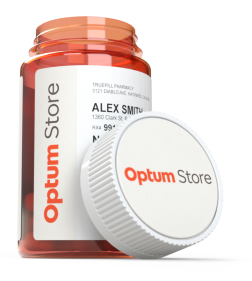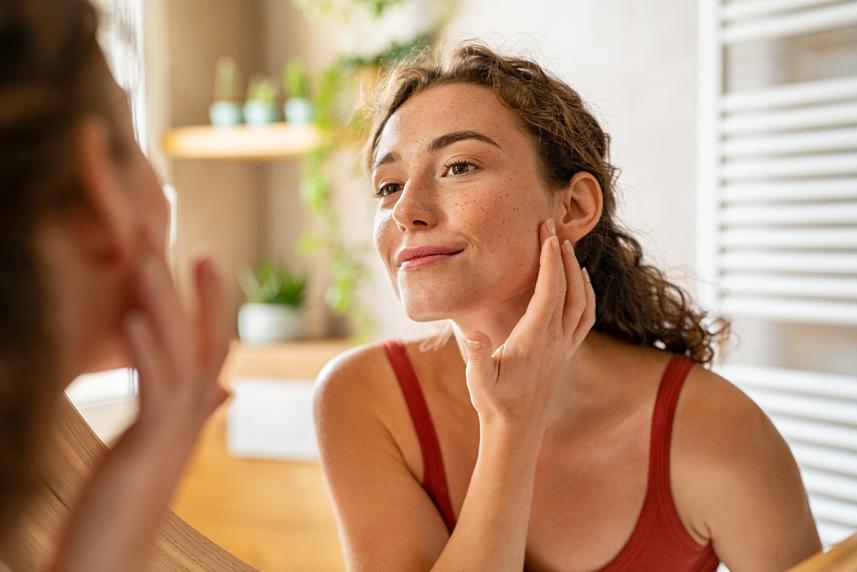
With prescriptions as low as $3 per month, you might be surprised at what you can save with the Optum Store.

Breakouts are a fact of life for many adults, but you can get on the path to clearer skin. Learn what causes acne and the best ways to treat it now.
Acne is among the most common chronic skin disorders. We typically associate it with teenagers, and for good reason. About 85% of teenagers and young adults deal with at least minor acne, according to the American Academy of Dermatology (AAD). But zits aren’t only for those crazy high school and college years. Many men and women battle breakouts well into their 20s, 30s and beyond.
No matter how old you are, acne can have a real effect on your self-esteem. But you don’t have to suffer, and you can get it under control. Read on for expert insight on why acne happens, and how you can treat and prevent it.
Acne is a skin condition that causes pimples, whiteheads and blackheads. It typically shows up on the face, chest, upper back and shoulders. These are the areas where you have the most oil glands (also called sebaceous glands).
To understand acne, you need to be familiar with these glands. Sebaceous glands produce sebum, which is a mix of oils that are secreted onto the skin via pores (also called hair follicles). Sebum helps your body in many ways:
Sebaceous glands are nearly everywhere on your skin. The only places you don’t have them? The palms of your hands and the soles and tops of your feet. Acne can show up anywhere that you have these glands, including the scalp, neck and buttocks.
A pimple develops when your body produces too much sebum. Normal bacteria on the skin multiply as a result of the increased oil. Then your pores become blocked with excess sebum and skin cells. In response, your body creates an inflamed (swollen) bump filled with pus. Pus is what causes the white tip on a pimple.
Hormones affect your sebaceous glands, prompting the skin to produce more oil. During puberty, hormones called androgens increase in boys and girls, according to the Cleveland Clinic. Androgens prompt the sebaceous glands to make more sebum, which leads to acne.
Studies have shown that in adults, women are more likely to have acne than men. One reason: Fluctuating hormones during women’s menstrual cycles continue to play a role during their childbearing years. About 12% of women and 3% of men may still have acne even in their 40s, says Johns Hopkins Medicine.
The Optum Store carries a variety of skincare products, including acne-fighting cleansers.
Many people think chocolate and greasy foods cause acne, but that’s a myth. Still, scientists do know there’s link between certain foods we eat and breakouts. Foods with a high glycemic index (GI) can cause acne or make it worse.
High-GI foods (such as processed carbohydrates) cause blood sugar to spike. They also contribute to the risk of Type 2 diabetes, heart disease and other conditions. So avoiding these foods is not only good for your skin — it can also improve your overall health.
Cutting high-GI foods out of your diet can lead to clearer skin. Foods to avoid include:
You might also try cutting back on milk. Some studies suggest that drinking cow’s milk may raise the risk of developing acne, according to the AAD.
Dermatologists say it can be helpful to keep track of what you eat and whether certain foods seem to trigger an outbreak. If cutting them out helps your skin, that’s a win.
Acne can show up in a variety of ways. And it’s possible to have several types at the same time.
Whiteheads and blackheads: When a pore becomes blocked with sebum and dead skin cells, it creates what’s known as a comedone. A blockage that’s closed at the surface and bulges out to cause a bump is a whitehead. If the blockage is open at the surface, the air exposure causes the plug to look dark. That’s a blackhead, also called an open comedone. This type of acne isn’t usually red and inflamed.
Papules and pimples: A papule is a tender, raised red spot caused by an inflamed, blocked hair follicle. Pimples are papules with pus at their tips.
Nodules: These are painful lumps under the skin. They can be small or large. They are caused by the bacteria P. acnes, which gets trapped in a pore and creates a painful infection in deeper layers of the skin. Nodules don’t have a pus-filled head. Squeezing them can cause further inflammation.
Cystic acne: These deep acne blemishes penetrate the skin. They tend to leave scars and should be treated by a dermatologist. This is a type of inflammatory acne. The cysts can be painful and large. They are similar to nodules, but they contain pus.

The 2 main types of treatments are topical creams, gels or lotions, and oral medications. You can buy some over the counter (OTC), but most are available only by prescription. Depending on the type of acne you have, your dermatologist might recommend 1 or more of the following:

With prescriptions as low as $3 per month, you might be surprised at what you can save with the Optum Store.
Topical and oral medications are the first line of defense against acne. But your dermatologist may recommend other treatments to help improve your skin.
Lasers and light treatments: Laser and light treatments are typically done in a doctor’s office. You can also buy at-home laser devices. These treatments typically don’t resolve acne on their own. But they can be part of an effective acne-fighting regimen. There are several light therapy treatments, including:
(You can buy OTC medical-grade light therapy devices that help fight acne at the Optum Store. Shop products now.)
Chemical peels: To perform a peel, a dermatologist applies an acid solution to remove top layers of skin.
Acne surgery: During this in-office procedure, a doctor uses a special tool to gently remove comedones (whiteheads and blackheads) or cysts.
Steroid injections: For people with inflammatory acne, a steroid injection can treat the swelling. Because steroids can cause skin thinning and discoloration, this might not be an ideal long-term solution.
Yes. If you get pregnant, you may need to switch up your acne treatment. Some treatments may cause birth defects. Other treatments have less definitive warnings, but doctors recommend stopping them to be on the safe side. Discuss your options with your doctor.
Definitely avoid these treatments:
Doctors recommend that you also stop:
Avoid being too rough on your skin when you wash your face or shower. Scrubbing skin or washing too frequently can actually cause more breakouts. Try these tips:
Acne scars and hyperpigmentation can be distressing. Hyperpigmentation occurs when a pimple heals but a dark spot remains. It’s more common in people with dark skin. A variety of treatments can improve the appearance of hyperpigmentation and acne scars.
Refill medications, schedule a virtual visit or shop for health essentials at the Optum Store. Start exploring.
Amy B. Lewis, MD, board certified dermatologist in private practice, New York City
Rajani Katta, MD, board certified dermatologist in private practice in Houston
Teens and acne: American Academy of Dermatology (n.d.): “Skin Conditions by the Numbers”
Androgens: Cleveland Clinic (n.d.): “Acne”
Acne in 40s stat: Johns Hopkins Medicine (2018): “Acne in Adolescents and Young Adults”
Milk and acne: American Academy of Dermatology (n.d.): “Can the Right Diet Get Rid of Acne?”
Acne treatments: Mayo Clinic (n.d.): “Acne”
Microneedling: Dermatologic Surgery (2020): “Microneedling as a Treatment for Acne Scarring: A Systematic Review”